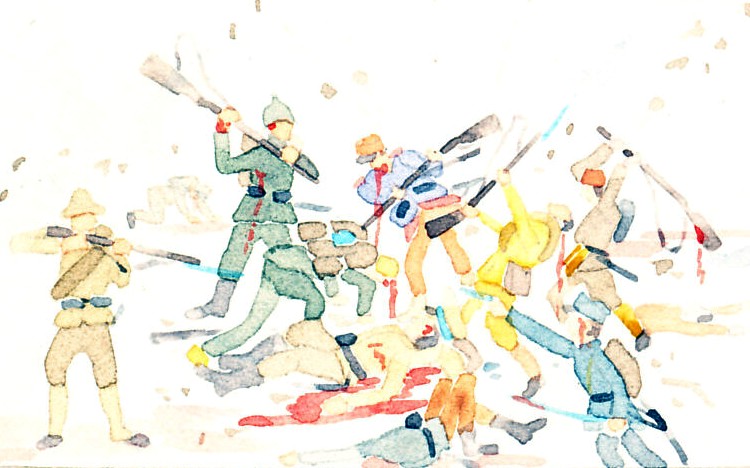Kaisers Wilhelm II and Franz Joseph with Sultan Mohammed and their generals over some of their conquests: Lüttich — Liege, Belgium, Warschau — Warsaw, Russia, and Przemysl, Austria-Hungary, recaptured from the Russians.
In the top left, Otto von Bismarck, Chancellor of Germany from 1871 to 1890, points to the dawn of the German Empire. In the top right, Helmut Moltke (the Elder), who led Germany to victory in the Austro-Prussian and Franco-Prussian Wars, discusses his plans with the future Emperor Wilhelm I.

Die Helden des Ostens, des Südens, des Westens, ein festes Band, schlugen mit eiserner Faust die Feinde in den Sand.
The heroes of the East, the South, the West, a solid band, beat the enemy into the sand with an iron fist.
Cities: Lüttich (Liege, [Belgium]), Warschau (Warsaw), Przemysl.
Other views:
Larger, Back
